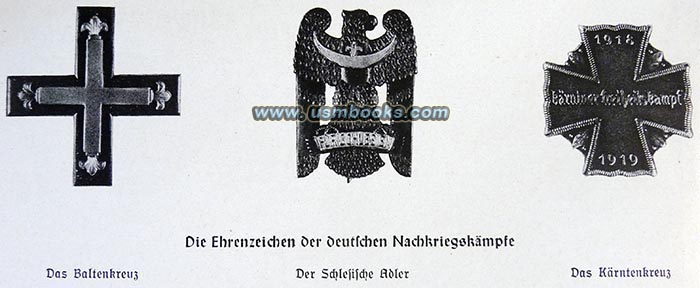
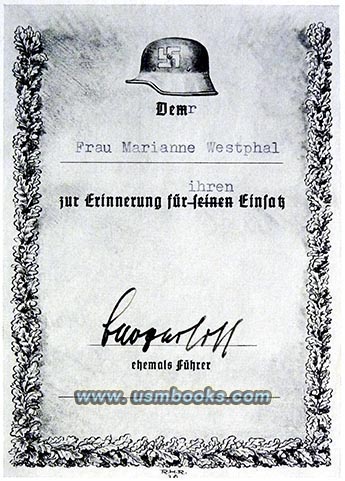


This is a fine original 1938 example of Das Buch vom deutschen Freikorpskämpfer by Ernst von Salomon. The huge 6 (!) pound hardcover book was published for the Freikorps magazine Der Reiter gen Osten by Wilhelm Limpert Verlag in Berlin in 1938. IT IS NOT a modern poor quality reprint of the 1938 book!
 |
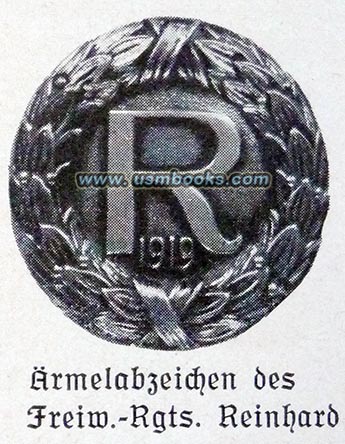 |
 |
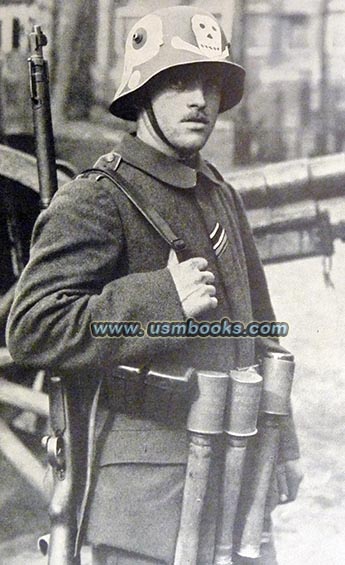 |
with modified WW1 helmet and uniform |
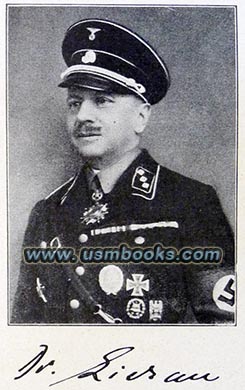
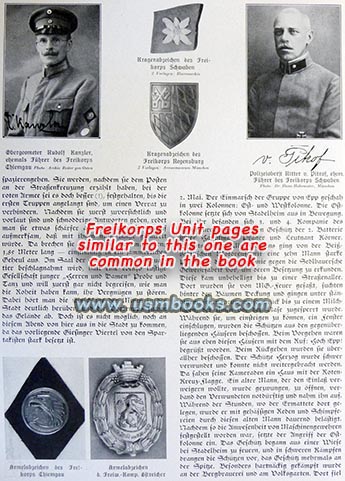
The foreword to this authentic Freikorps history by author Ernst von Salomon explains the types of men that made up Freikorps units - patriotic World War I veterans who wanted to change the direction of Germany during the postwar years of inflation and the rise of communism. According to Ernst von Salomon, Das Buch vom deutschen Freikorpskämpfer explains their part in German and world history in their own words. The experiences of the Freikorps Fighters is the history of post World War I Germany is covered in fine detail, and the author thanks all of them.
Chapters cover the battle against communists in central Europe and especially Germany, divided by areas such as Berlin, Hamburg-Bremen, Silesia, East Prussia, Middle, Western and Southern Germany; the Wall Against Bolshevism; Fighting to Defend the Eastern Border and Southern Border; the Freikorps in the Baltic States; the 1920 Kapp-Putsch; Freikorps Activities on the Western Border of Germany with an extensive illustrated chapter on Nazi martyr Albert Leo Schlageter.
The chapter about the Kampf um Berlin (The Battle for Berlin) was written by SS-Gruppenführer Reinhard who was the former Führer or leader of the Volunteer Regiment Reinhard and Freikorps Commander of Berlin.
The chapter about the Kampf um Berlin (The Battle for Berlin) was written by SS-Gruppenführer Reinhard who was the former Führer or leader of the Volunteer Regiment Reinhard and Freikorps Commander of Berlin.
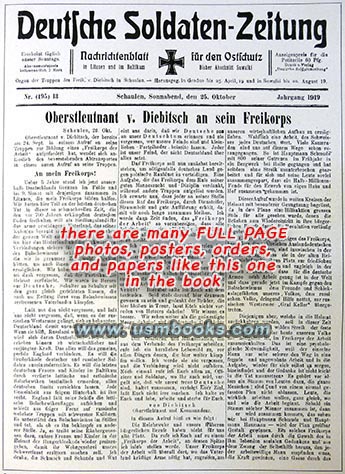
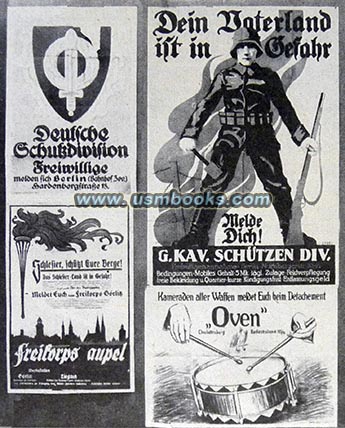 |
| Almost immediately strong armed mobs of German communists operating well beyond the authority of the KPD (Kommunistische Partei Deutschlands or the German Communist Party founded by Rosa Luxemburg and Karl Liebknecht) strongly supported by Russian communists in the new Soviet Union. They took to the streets in Germany and beat, robbed and killed anyone that got in their way. Within months very strong communist insurgents ruled the streets in Bavaria and much of Berlin to say nothing of many smaller venues. |
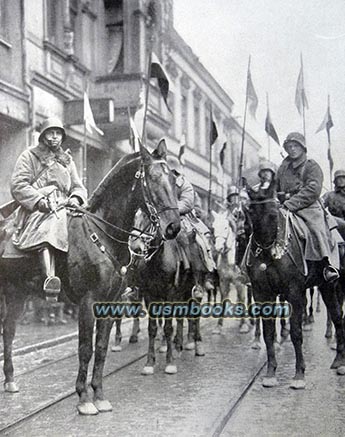 |
The natural response among many World War I veterans and nationalists in Germany was to form self-ordained paramilitary organizations called “Freikorps” outside the meaning of a national military or internal treaties, and almost immediately engage the communists in bloody confrontations and at the ballot box in parliamentary elections.
These Freikorps groups ranged from small to very substantial in size , were well armed and very determined, and were led by men who later became very well-known inside the Nazi Party, such as SA Stabchef Viktor Lutze, Konstantin Hierl, Konrad Henlein, Franz von Pfeffer and SS-Gruppenführer Reinhard to name just a few.
These Freikorps groups ranged from small to very substantial in size , were well armed and very determined, and were led by men who later became very well-known inside the Nazi Party, such as SA Stabchef Viktor Lutze, Konstantin Hierl, Konrad Henlein, Franz von Pfeffer and SS-Gruppenführer Reinhard to name just a few.
 |
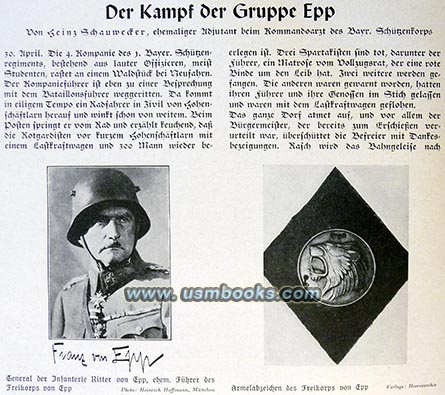
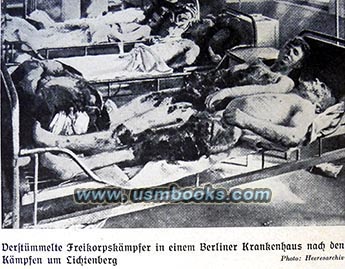
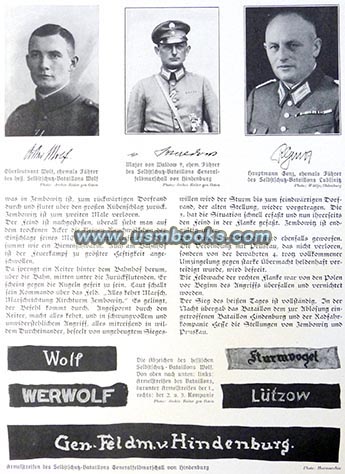
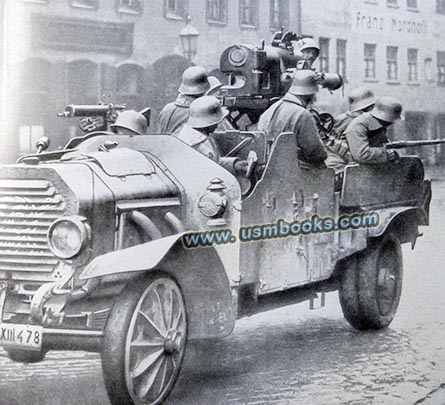
Das Buch vom deutschen Freikorpskämpfer measures 9 x 12-½ inches, is 1-¼ inches thick and has 406 heavily illustrated pages. The black linen hardcover book weighs 6 pounds (2.7 kg)! This 85 year old example is in nice used condition and has no odor.
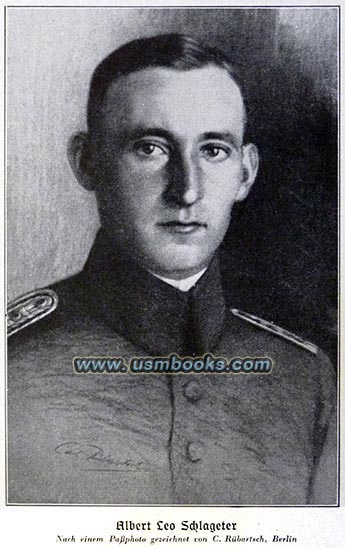
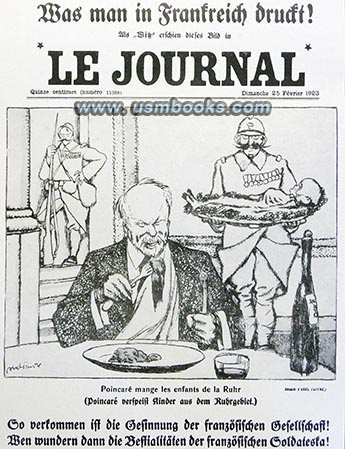 |
French President Raymond Poincaré eating children from the German Ruhrgebiet. |
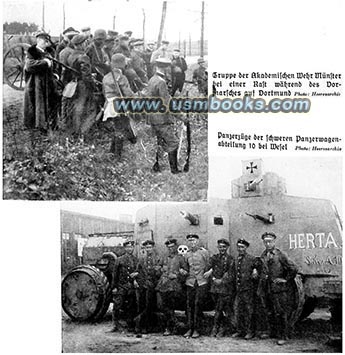
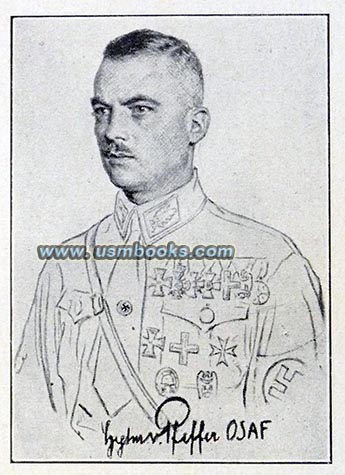
The enormously unfair Treaties of Versailles and St. Germain placed unworkable assessments and penalties on the losing side in World War I, Imperial Germany. With the abdication of the Kaiser and the inability of the remaining government to govern the country of 62 million people, and with no army or police powers worthy of the name, the law in the street belonged to anyone with the power to take it.
The classic European parliamentary form of the German government that relied very heavily on small well-meaning and not so well-meaning political parties forming alliances and coalitions left the country unable to form a functioning government of any real kind. Coupled with almost immediate periods of enormous inflation and a scarcity of consumer goods Germany presented huge political opportunities to those on the political left with a will to fight.
The classic European parliamentary form of the German government that relied very heavily on small well-meaning and not so well-meaning political parties forming alliances and coalitions left the country unable to form a functioning government of any real kind. Coupled with almost immediate periods of enormous inflation and a scarcity of consumer goods Germany presented huge political opportunities to those on the political left with a will to fight.
The 85 year old book also contains many maps, as well as battle sketches and battle orders, Freikorps songs, etc.
The detailed chapters are accompanied by many of the very best pictures of important Freikorps Fighters, historic Freikorps posters, communist rallies, street battles and their resulting damage, examples of Freikorps pins and badges, weapons, wounded and hospitalized Freikorpskämpfer, funerals of killed Freikorps Fighters, famous World War I General von Lettow-Vorbeck (the “Lion of Africa”), armed Freikorps Lichtschlag Fighters on horseback, Konstantin Hierl, Friedrich Lautenbacher, a rare map of the ring of Freikorps groups around Munich on 30 April 1919, General der Infanterie Ritter von Epp (leader of Freikorps von Epp), a retreating German armored supply train in Ukraine (1918), Lithuanian men in German uniforms, Bolshevist Commissars, early German airfields used by Freikorps pilots, German WWI soldiers who converted to the Volunteer Army West (wearing German uniforms with Russian Kokarden and shoulder boards), Major Dr. Lierau, Freikorps Selbstschutz (“self protection”) troops in Upper Silesia, the Freikorps monument on the Annaberg, Freikorps fighters in the Sudetenland with swastika armbands, Konrad Henlein, Berlin street battles during the Kapp-Putsch, Freikorps von Pfeffer in Westfalen (led by Hauptmann Franz Pfeffer von Salomon, the future NSDAP Gauleiter of Westphalia), death sentences of Freikorps men, SA Stabchef Viktor Lutze (former Führer of the Freischar Schill), the Albert Leo Schlageter monument, etc.
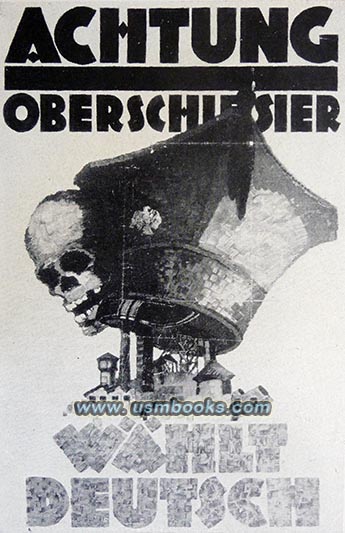
Inside the front cover is a unique presentation bookplate personalized to a woman, Freikorps Fighter Mrs. Marianne Westphal, from her former Freikorps Führer Oberleutnant Begerhoff. Very special and very rare!
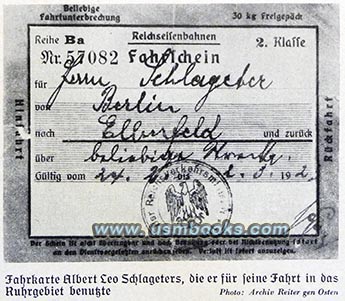 |
Leo Schlageter used to travel from Berlin to Elberfeld near Wuppertal. After his execution, a Schlageter Monument was built in Elberfeld. |
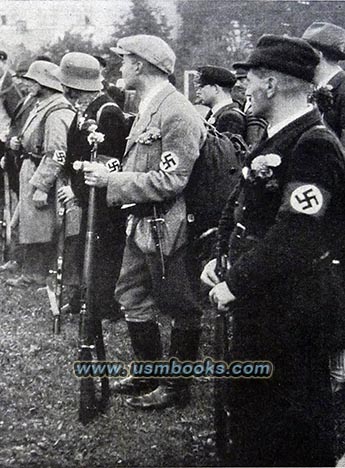
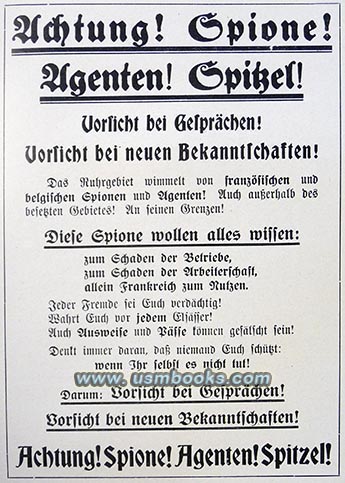
Have a look at 1933 book The National Revolution in Germany for sale on USMBOOKS.com. We are happy to combine shipping of multiple purchases!
USM book #1269 |
| • Add $14.50 for Priority Mail shipping with online tracking OR $8.95 for Media Mail |
| • IF you wish to purchase highly recommended, but optional insurance, add $5.50. |
| • We will be happy to ship abroad at additional cost, however foreign customers are responsible for any VAT payments, import duties & customs clearing fees. Please inquire. |
HUGE 6 POUND 1938 HEAVILY ILLUSTRATED NAZI HISTORY
OF GERMAN FREIKORPS FIGHTERS
DAS BUCH DER DEUTSCHEN FREIKORPSKÄMPFER
SUPERB HEAVILY ILLUSTRATED NAZI
1938 HISTORY OF THE
FREIKORPS FIGHTERS

